Trading : 7am to 5pm (Mon-Sun)
Call Us : (03) 7071 0777
Email Us : sales@primalhunter.com.au
NEED HELP?
Hours: 7am-5pm (Mon-Sun)
Ph: (03) 7071 0777
E:sales@primalhunter.com.au

One of the most common questions we get from hunters is this:
What’s the difference between the Hikmicro Falcon and the Hikmicro Lynx 2.0?
At first glance, both models seem almost identical on paper. They share similar sensors, detection performance, and compact designs — so why is the Falcon priced higher than the Lynx 2.0?
To answer that, we’ll take a deep dive into the details — exploring not just the specs, but also how each unit performs in real-world hunting conditions.
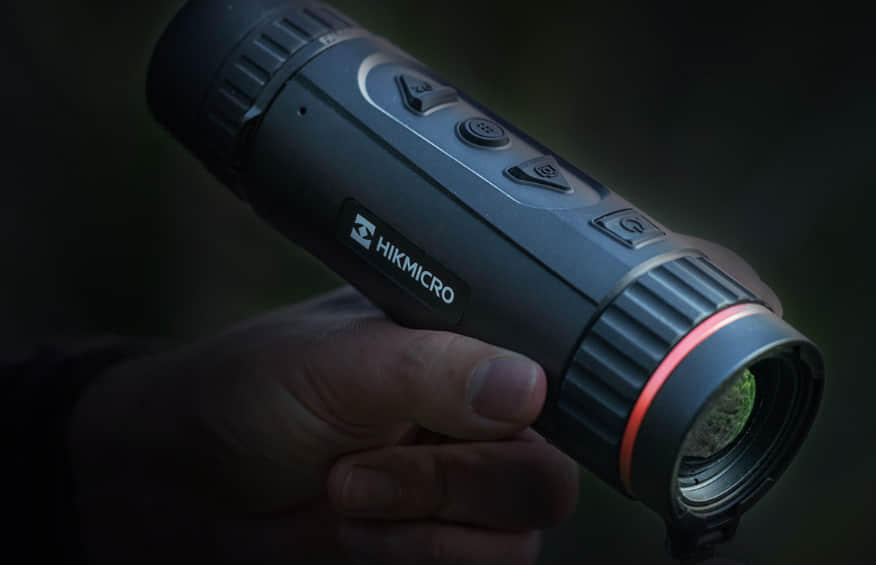
Both the Hikmicro Falcon FH series and the Lynx 2.0 series are built around the same high-performance thermal sensor.
You’ll find the following similarities across both lineups:
So, on paper, the thermal cores are evenly matched. Both can detect heat signatures from long distances and render them with clarity.
At this point, many hunters assume they’re essentially the same unit — but that’s where the details make all the difference.
The Lynx 2.0 series gives you more flexibility in lens sizes, with models available in 15mm, 19mm, 25mm, and 35mm.
This means you can tailor your setup to your environment — smaller lenses for closer-range bush hunting, and larger lenses for open paddocks or long-range detection.
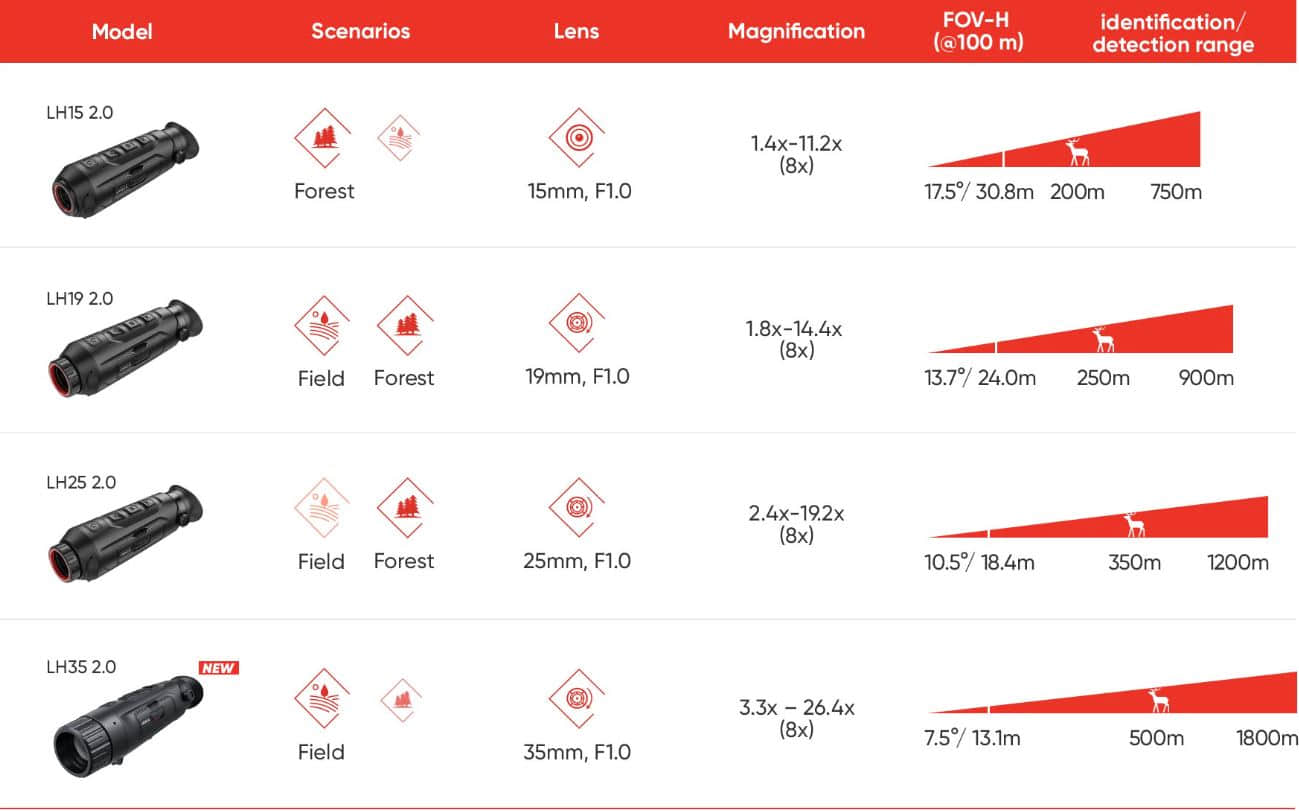
The Falcon FH series, meanwhile, comes in 25mm and 35mm versions, while the higher-end Falcon FQ series offers 25mm, 35mm, and 50mm options — along with a 640 × 512 sensor for even more image detail.
If you hunt wide, open country or need extended detection range, that 50mm Falcon FQ50 model is in a league of its own.
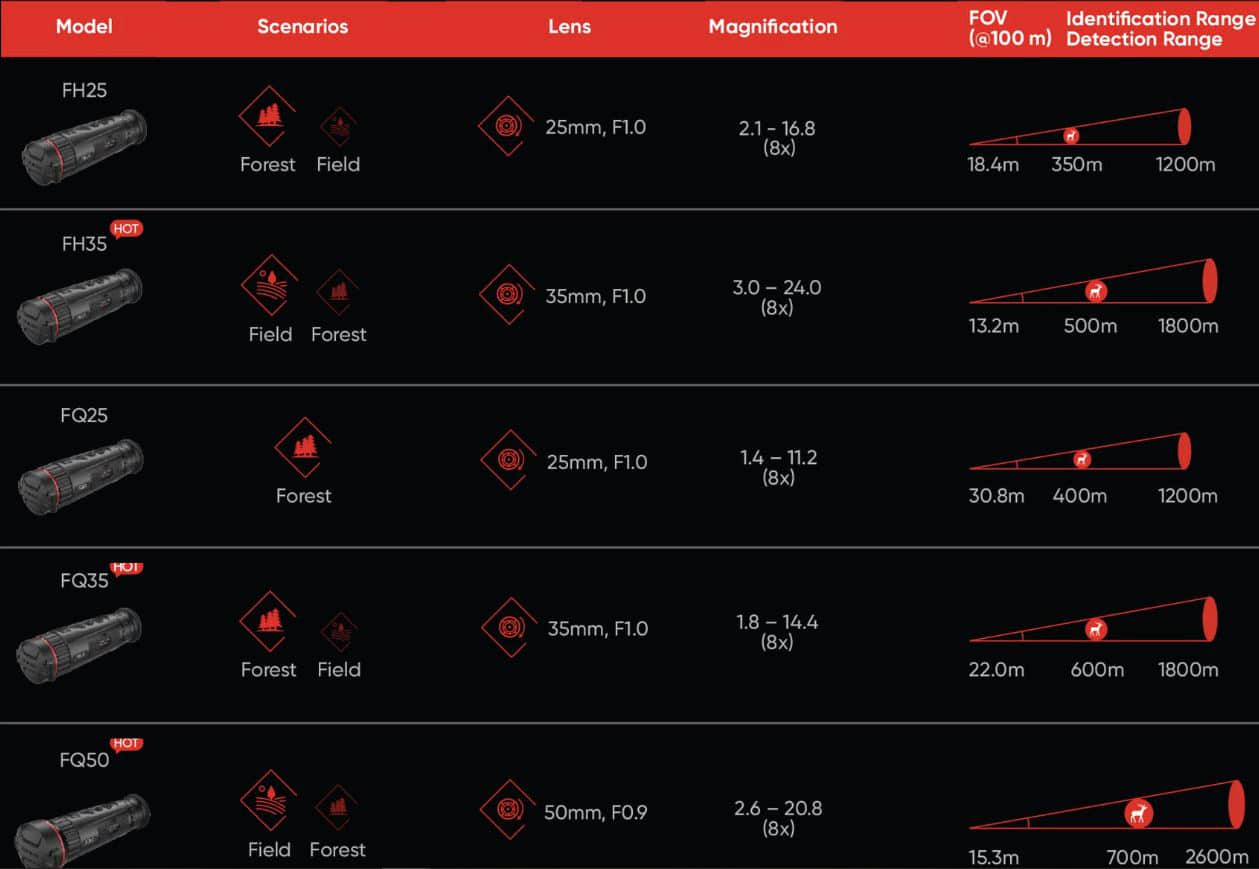
The Falcon clearly pulls ahead here.
For hunters who record long sessions or store multiple videos before transferring them, this added capacity is a real advantage. No need to constantly delete footage or carry a laptop to dump files in the field.
This is one of the Falcon’s biggest strengths.
Falcon models feature “Image Pro”, Hikmicro’s advanced image optimization algorithm. It automatically fine-tunes contrast, sharpness, and noise reduction — delivering a cleaner, more detailed, and layered image.
You’ll notice the difference especially in complex backgrounds — grassy paddocks, dense tree lines, or uneven terrain. The Falcon’s processing helps separate your target from the background more effectively, reducing eye strain during long sessions.
The Lynx 2.0 still provides excellent image quality, but it lacks that next-level refinement the Falcon brings with Image Pro.
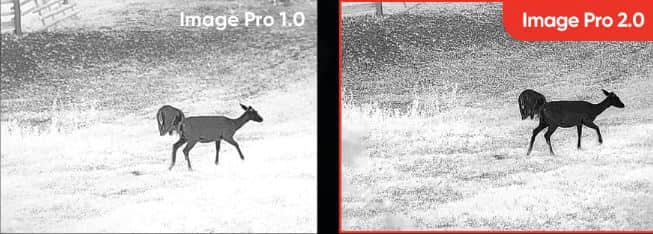
Now that you know the main differences, how do you decide which model suits you best?
The answer depends on where, how, and why you hunt.
If you hunt in thick scrub or close-range environments, you’ll want a wider field of view (FOV). A wider FOV lets you scan more area quickly, helping you spot movement faster.
In this case, smaller lens sizes (like the 15mm or 19mm Lynx 2.0) make perfect sense.

If your hunting is more open country — paddocks, plains, or hilltops — a larger lens like the 35mm or 50mm Falcon provides a narrower FOV but dramatically extends your detection range.
For many hunters who operate in mixed terrain, the 25mm models strike a nice balance between coverage and range.
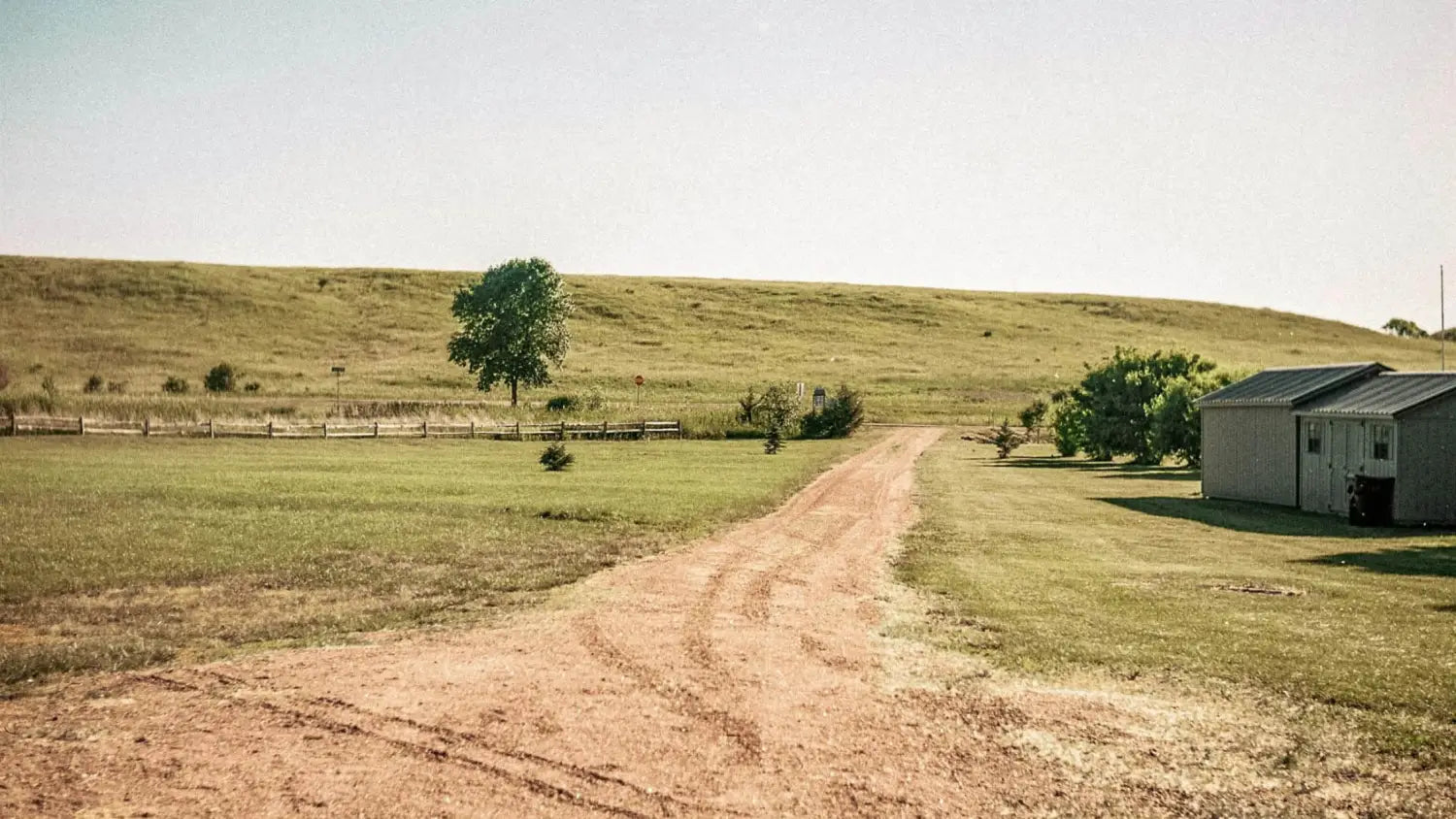
Ask yourself what you want your thermal monocular to do:
Think about your usual setup, too. If you already have a thermal scope or clip-on, your handheld monocular might not need top-end specs. But if it’s your primary detection and identification tool, investing in the higher-end Falcon could save you frustration later.

The Lynx 2.0 series represents incredible value. It delivers professional-grade performance at a lower price point, making it a smart choice for casual or intermediate hunters.
The Falcon, on the other hand, caters to those who want top-tier performance and longevity. Its higher resolution options, extra memory, and advanced image processing justify the higher cost if you’re serious about night hunting or frequent outings.
It’s also worth noting that the Falcon’s image quality can help reduce eye fatigue over long scanning sessions — something seasoned hunters truly appreciate after hours behind the lens.
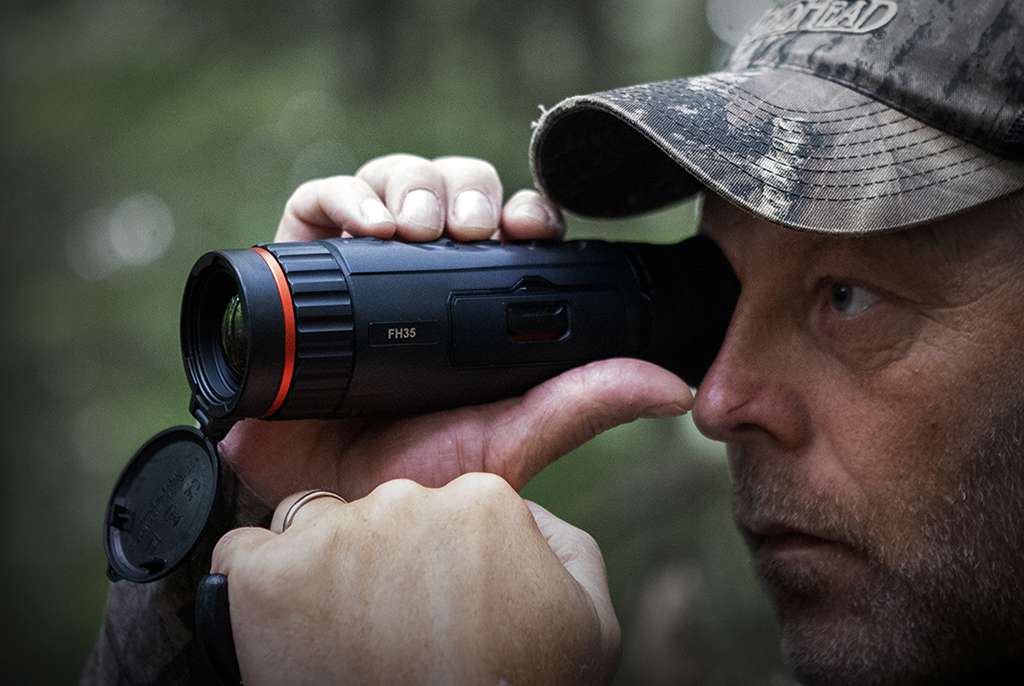
Imagine two hunters:
Matt hunts deep in the dense Victorian bushland, where visibility is limited and the action happens fast. His typical shots are well within 100 metres, and his main goal is to detect movement quickly among trees, scrub, and thick cover. In this kind of environment, an extremely long detection or identification range isn’t necessary — you’re rarely looking more than a few hundred metres ahead, and even then, line of sight is often blocked by vegetation.
That’s why the Lynx 2.0 15mm is the ideal choice for Matt. It’s lightweight, compact, and quick to operate, allowing him to scan the bush effortlessly without being bogged down by unnecessary magnification.
A 384px sensor easily gets the job done at these closer ranges, offering excellent clarity and detail for detecting animals like foxes, pigs, or deer within practical shooting distances. When Matt spots a heat signature, he can then use his day scope, night vision, or thermal optic to positively identify the target before taking a shot — so there’s no need for ultra-long-range thermal identification in this setup.
In fact, in bush hunting, a wide field of view (FOV) and lower base magnification are far more valuable. The wider FOV lets Matt see more of what’s in front of him, covering more ground with each scan and ensuring he doesn’t miss any potential movement. The lower magnification also makes target acquisition faster and smoother when game appears suddenly from the scrub — which often makes the difference between success and a missed opportunity.
In short, for close-range, fast-paced environments, Matt’s setup prioritises situational awareness over distance performance. The Lynx 2.0 15mm gives him everything he needs — crisp detection, fast scanning, and affordability — without paying for long-range capabilities he’ll rarely use.

Darren, on the other hand, hunts from his ute, scanning wide open paddocks across New South Wales using a roof-mounted thermal monocular. For this kind of long-range work, the Falcon FQ50 is the perfect choice.
With a detection range of up to 2600 metres — the longest of all the Lynx 2.0 and Falcon models — and identification capability out to around 700 metres, Darren can spot and confirm targets well before getting within shooting distance. This means less time wasted driving closer to check if a heat signature is worth pursuing and more efficient hunting sessions overall.
The narrower field of view on the FQ50 is actually an advantage here. From an elevated or roof-mounted position, Darren can easily sweep large paddocks and lock onto distant targets faster. In his case, a tighter FOV translates to quicker target acquisition and fewer missed opportunities — exactly what you want when scanning long distances across open terrain.
Both made the right choice — not because one unit is better than the other, but because each picked the tool that suited their environment and goals.

Ultimately, choosing between the Hikmicro Falcon and Lynx 2.0 depends on your needs, not just the specs.
If you'd like to like to get your hands on a Hikmicro Falcon or Lynx 2.0, then checkout our collections below:
Still unsure which model fits you best?
We can help you compare models side-by-side and highlight the exact differences that matter for your hunting style.
Here's a few to get you started:
If you can't find what you need above, simply email us (sales@primalhunter.com.au) the models you’re considering (we can compare up to five models).
And we’ll send you a custom comparison table — no fluff, just straight answers.
Or, if you’d rather have a chat, give us a call on (03) 7071 0777.
Whether it’s a quick 5-minute call or a detailed 30-minute discussion, we’ll take the time to find your perfect match.
That’s our Primal Hunter Promise — real advice, no sales pressure, and a solution tailored to how you hunt.
Leave a comment